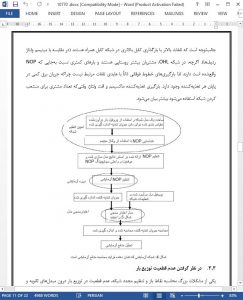Abstract
Automatic load transfer (ALT) on the 11 kV network is the process by which circuit breakers on the network are switched to form open points in order to feed load from different primary substations. Some of the potential benefits that may be gained from dynamically using ALT include maximising utilisation of existing assets, voltage regulation and reduced losses. One of the key issues, that has yet to be properly addressed in published research, is how to validate that the modelled benefits really exist. On an 11 kV distribution network where the load is continually changing and the load on each distribution substation is unlikely to be monitored - reduction in losses from moving the normally open point is particularly difficult to prove. This study proposes a method to overcome this problem and uses measured primary feeder data from two parts of the Western Power Distribution 11 kV Network under different configurations. The process of choosing the different configurations is based on a heuristic modelling method of locating minimum voltages to help reduce losses.
1 Introduction
The cost and limited flexibility of traditional approaches to 11 kV network reinforcement threaten to constrain the uptake of low carbon technologies. In the UK, to enable distribution network operators (DNOs) to develop new approaches, OFGEM (Office of Gas and Electricity Markets, a UK National Regulatory Authority) has released £500m of funding – Low Carbon Network Fund (LCNF) [1] for DNOs to trial innovative techniques and share the learning with the rest of the industry. Project FALCON [2] was funded via this OFGEM initiative to DNO Western Power Distribution plc. (WPD), and aimed to facilitate the uptake of low carbon technologies by delivering faster and cheaper connections to the 11 kV network by reducing traditional reinforcement requirements. The trial provided learning on the use of real time data to inform network planning rather than traditional indicators such as total demand and engineering guidelines.
7 Conclusion
Confidence in the benefits from network reconfiguration is dependent on the accuracy of estimated time-varying loads. This research first focuses on determining a network configuration and then testing this configuration to see if the benefits may be quantified in the presence of uncertain load. This paper looks at a method of calculating the network configuration at different loads using different methods and the associated benefits. There are trade-offs around any method whether it be heuristic or otherwise routine and the decision was made to trade number of customers along a feeder in favour of reducing losses. The minimum voltage method was used to set up a set of different network configurations.
During the model validation, the feeder currents are distributed among the substations according to the estimated load profile. The loads are scaled to match the individual calculated feeder currents with the measured ones. The proposed load validation method can eliminate the effect of time varying load and retain the indication of variance between assumed and actual distribution of feeder load. The validation show that load distribution and estimation in FALCON is reasonable for benefit assessment.
In conclusion, it is difficult to validate network reconfiguration especially relating to advantages pertaining to loss reduction in light of varying and estimated loads. This paper presents a method of undertaking such an analysis by comparing measured and calculated data under different network configurations. The proposed load validation method can secure the confident on benefit assessment for the industrial application.











